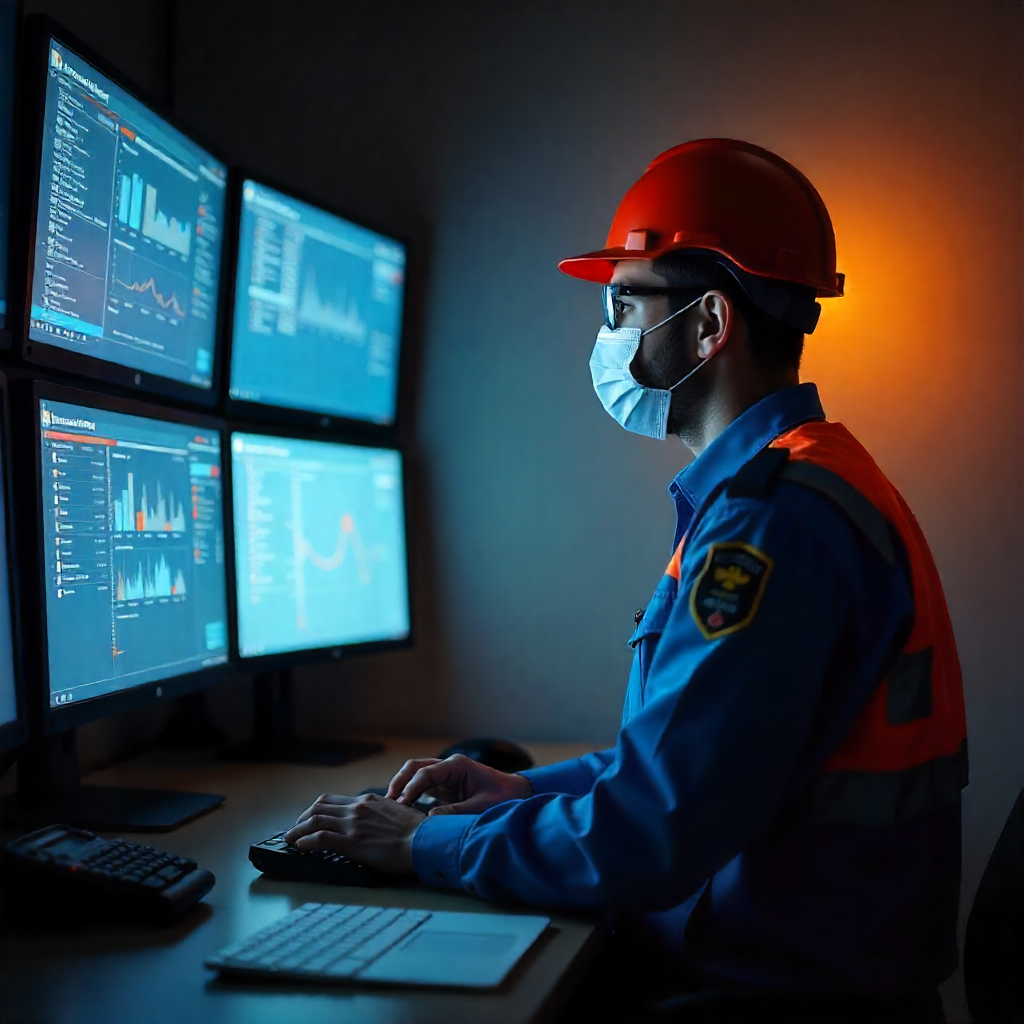Safety in industrial, manufacturing, and construction environments is paramount, governed by strict regulations designed to protect workers from physical harm. A major challenge in maintaining these standards is ensuring the consistent and correct use of Personal Protective Equipment (PPE), such such as hard hats, safety vests, gloves, and face shields. Relying solely on human supervisors for continuous monitoring across large, complex sites is often impractical and subject to human error. This necessity for ubiquitous, unbiased, and continuous safety monitoring has driven the development of the PPE detection system—a cutting-edge solution that uses Artificial Intelligence (AI) to enforce safety protocols automatically and in real-time.
The Mechanism of AI-Powered PPE Detection
A PPE detection system is a specialized computer vision application built on deep learning technology. It transforms standard surveillance cameras already present on a site into intelligent safety monitors. The system is designed to perform two primary functions simultaneously: object detection and classification.
The operational sequence typically follows these steps:
-
Video Stream Acquisition: The system takes a live feed from IP cameras installed in high-risk zones, entry points, or general work areas.
-
Person and Object Detection: Using neural networks, the AI first scans the video frames to detect and localize all objects of interest, primarily human figures and relevant PPE items.
-
PPE Classification and Verification: Once a human figure is detected, the AI analyzes the area around the person’s head, hands, and torso to determine the presence, type, and correct usage of mandated PPE (e.g., is a hard hat present? Is the safety vest visible? Are gloves being worn?). The system is trained on vast datasets to distinguish between correct usage (e.g., hard hat correctly worn) and incorrect usage (e.g., hard hat carried instead of worn).
-
Real-time Alerting and Logging: If a person is detected within a designated safety zone without the required PPE, the system instantly generates an alert. This alert can be sent to a site supervisor via a mobile device, a central control room monitor, or even triggered locally (e.g., a flashing light or siren). All detected events, including video snippets of the violation, are logged for compliance reporting and incident analysis.
This automated process provides an objective and exhaustive monitoring capability that far exceeds what is possible through traditional manual supervision.
Applications Across High-Risk Industries
The versatility of the PPE detection system makes it an invaluable asset across sectors where safety compliance is critical:
-
Construction Sites: Monitoring the use of hard hats, high-visibility vests, safety harnesses (especially for work at height), and steel-toed boots. This is crucial for preventing severe accidents in dynamic and often chaotic environments.
-
Manufacturing and Industrial Plants: Ensuring adherence to specific safety requirements, such as the use of eye protection, ear defenders, respirators, and specialized gloves near machinery or hazardous materials.
-
Oil and Gas/Energy Sector: Used at critical infrastructure points and drilling sites to verify that technicians and contractors wear fire-resistant clothing and specialized protective gear as mandated by strict regulatory bodies.
-
Warehousing and Logistics: Monitoring forklift operators and ground personnel for compliance with safety vests and appropriate footwear to prevent accidents in high-traffic areas.
Benefits: Moving Beyond Compliance
The implementation of a modern PPE detection system delivers tangible benefits that extend beyond simply meeting regulatory compliance:
-
Proactive Accident Prevention: By identifying and alerting supervisors to non-compliance in real-time, the system allows for immediate intervention before an accident occurs, saving lives and preventing costly injuries.
-
Unbiased, Continuous Monitoring: Unlike human observers whose attention may lapse, the AI system monitors every camera, 24/7, providing consistent and objective enforcement across the entire site.
-
Operational Efficiency: Automated logging and reporting reduce the administrative burden on safety officers, allowing them to focus more on training and hazard mitigation rather than paperwork. The logged data provides concrete evidence for safety audits and helps identify patterns of non-compliance that can be addressed through targeted training.
-
Culture of Safety: The presence of automated, reliable monitoring subtly but effectively reinforces a strong safety culture among the workforce, as employees know that adherence to protocols is consistently enforced.
The Future: Integration and Miniaturization
The rapid evolution of this technology is closely tied to advancements in sensor and computing hardware. As AI models become smaller and more efficient, they are increasingly deployed at the “edge”—directly on the cameras or on small, local servers. This reduces data latency, conserves network bandwidth, and makes the system even more responsive and scalable.
This pursuit of miniaturization, high performance, and rapid deployment of advanced sensory capabilities is a defining characteristic of cutting-edge security technologies across all sectors. Just as AI models are becoming small enough to run on local cameras for safety detection, parallel efforts in physical security are focusing on making powerful chemical detection systems more compact and mobile. This trend towards advanced, miniaturized analytical capabilities is perfectly exemplified by the role of Mems Semiconductor Technology: A Game-Changer for ETD (Explosives Trace Detection). Micro-Electro-Mechanical Systems (MEMS) technology uses semiconductor processes to create miniature sensors and actuators. When integrated into ETD devices, MEMS allows for the creation of explosive detectors that are significantly smaller, lighter, more cost-effective, and highly portable than bulky traditional devices. This breakthrough enables the mass deployment of sensitive detection capabilities in environments previously inaccessible to large laboratory-grade equipment, further democratizing sophisticated safety and security measures worldwide.

Leave a Reply